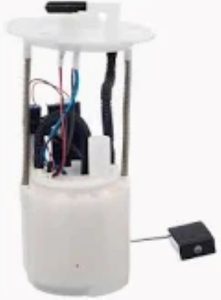Fuel pump wiring needs to be done with great attention to detail for both proper operation as well as safety. The first step is to choose the correct gauge wire (usually 14 or 16 AWG) depending on how much amps the pump will draw, which could be between 12 and up to 15. This net drop in voltage can make the pump less efficient when functioning with unterminated wires. Some electric fuel pumps pull lots of power, enough to necessitate a relay to control the current load. This protects the pump from the high-current draw seen during startup and allows a smaller gauge of wire to be used for its trigger.
Lightly pass through such wire close to the positive terminal of the vehicle battery, where it must be attached and protected by a fuse that can be between 20 and 30 amps according to the pump's specifications. It protects the solution from a short or something in the wiring. It is important that the pump be properly grounded for a solid chassis ground so that it runs at its intended values. Grounding also helps prevent electrical noise, which can interfere with other electronic components of the vehicle. By contrast, some 3rd party setups for Fuel Pumps (such as those by Kemso Fuel Pump) want you wiring these properly to run a high-flow setup, obviously aimed at the performance market where reliability is essential.

Anything in the region of high heat, like near the exhaust or engine block is a natural no-go area when it comes to routing your wiring. This heat can break down the insulation around the wires making a short or even starting a fire. Wire sleeves/ looms: This is also an additional insulated layer for wires, which are higher in quality material and most of them very heat resistant. Industry standard dictates a certain voltage drop for the wiring leading to a pump and that this voltage not fall more than 0.5 volt from idle all the way up to full throttle load requirements. This is especially critical in performance-based fuel systems, which require increased flow rates and pressure.
During installation, the wiring diagrams supplied by manufacturers are vital references. The diagrams show you exactly what the wire colors are and how everything, from the relay to the fuse to the pump, is supposed to be wired. Kemso, as an example, features comprehensive instructions with its high-performance pumps to help ensure users make the correct wiring connections and avoid some of the common mistakes that can lead to reduced pump life or fuel delivery problems.
For example, during the installation process, answers to questions such as "Why does the fuel pump turn off after a few minutes?" An answer might be a voltage to supply or grounding. Most fuel pumps fail early because of undersized wire gauge or poor connections that cause the pump to work hard which makes it overheat and eventually fail. Following best practices and quality components, such issues can be fully avoided which would lead to the maximized efficiency and lifespan of your fuel pump.
More information on fuel pumps, including wiring tips and product descriptions, from Kemso range of Fuel Pump components suitable for both performance or daily-driving requirements.